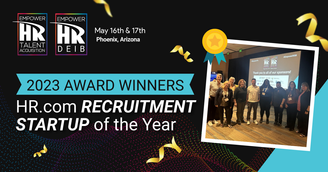There’s a reason we don’t put photos on resumes in the USA.
Before we get into discussing bias in video interviews, we need to quickly frame up the two core types of video interviews, as sometimes very different experiences get lumped together under “video interviewing.”
Basically, you have one-way video job applications — think HireVue or WePow — and two-way tools, i.e. Zoom or Skype or Google Meet. A “one-way tool” is almost akin to a prompt from a hiring manager. There is no actual conversation. You record a video answer to a prompt and send it to a recruiter/hiring manager. It’s not a back-and-forth conversation. Hence, one way.
Two-way tools are actually conversations, such as you discussing a job and your experiences with a recruiter over video. There is still bias, as we will discuss in a second, but it’s an actual conversation with back-and-forth elements.
Both one-way and two-way have pros and cons, usually around cost efficiencies and how recruiters optimize them, but both one-way and two-way video interviewing do contain biases.
Video interviewing did scale very fast.
When COVID-19 happened, and “Zoom” became a verb (argh, Zoom fatigue became a concept too) video interviewing became even more the rage. Again, though, a lot of times one-way tools have hijacked the term “video interviewing.” For example, in May, LinkedIn rolled out some one-way tools, whereby hiring managers can pose some “pre-interview” questions and get recorded answers — and LinkedIn’s tech will help the candidates evaluate themselves before sending, i.e. words per minute, filter words, and more.
But that’s a one-way tool, not an actual interview between two people. LinkedIn has amazing scale in recruiting, so that one-way tool will probably crowd out some other one-way tools from the market, which you’re already seeing.
In this whole discussion of video interviewing, though, there are a lot of concerns with bias in video interviews that need to be discussed as well.
Bias in video interviews: One-way and two-way
As far back as 2011, articles were being written trying to raise the flag on bias in video interviews. (Not so fun fact from that article, as an aside: pre-9/11, recruiters often flew to cities and interviewed candidates in airport lounges, but when security protocols changed, video interviewing had to start scaling.) The problem is, as WePow and others have noted, it can be a compliance nightmare. HireVue got sued in 2019 by a rights group, and while the base of the lawsuit was more about face-scanning technology, the entire ecosystem of video interviewing bias played out in the documents. Those are all mostly one-way tools. Two-way tools also have bias concerns, and even more drastically in some ways, because the recruiter or hiring manager is making a lot of inferences in the early stages of the discussion about tone of voice, speech, word choice, filter words, and, even worse — race, gender, any visible disability, et al.
Now, it is true that experts lack consensus on the problem of bias in video interviews. One of the common arguments you’ll hear is that if a hiring manager is going to discriminate based on race or gender, they’re going to do that regardless of the medium. 17-year recruiter Adam Karpiak just did a Twitter thread about all sorts of discrimination and bias in hiring relative to BLM, and some of the responses people submitted are real doozies. If you gave the hiring managers mentioned in that thread a bunch of different interview options, it is true that they would find a way to discriminate regardless of channel, which reduces the idea of bias in video interviews.
But a lot of the core one-way providers do admit that the first question they get from clients is about bias and the legal picture of video interviews. Even if you want to argue for cost efficiency or scale or “Well, people can discriminate based on name on the resume,” the fact remains that there is bias in video interviews.
So what do we do about bias in video interviews? Do we kill video?
No. We are too far along with video to kill it, but we do need to manage it better.
What does that look like? There are a few steps:
- If you are a senior recruiter or recruiting manager, this is not a “sky is falling” concept, but you need to be concerned about the rise of AI-powered suites and one-way video options within a platform, because those are moving recruiting closer to automation, which could threaten actual recruiter jobs. We have said for years that it will be hard to automate recruiters because it’s such a human-to-human profession, which is true — but it’s only human-to-human if you keep your conversations. Your conversations, and the “interview data” that results from those conversations, are your actual power. Always remember that.
- Realize that Zoom is not necessarily the “one tool to rule them all.” It’s had a great run during COVID branding-wise, but increasingly in video interviewing, we will probably see industry-specific options cropping up. Some of those already exist, but you’ll see video interviews for lawyers, video interviews for sales teams, etc. start to scale more and more.
- Ask the right questions internally about your culture, what you want, who you want, how the work gets done, and where you stand in terms of POC and overall racially in this climate. People have called this moment a “reckoning” for corporate culture, and we’ve already seen 10-12 CEO removals or resignations due to diversity issues. People need to be thinking more about their culture and how they want to shape that culture, and as you have those discussions, your approach to interviews is going to inherently change as well. Do you want a pre-eminent interview strategy that might promote bias, or do you want conversations with real impact that can be sorted and analyzed for hiring manager ease of use?
Now, admittedly the human brain defaults to certain positions and elements of similarity, so bias cannot be completely eradicated, no. That is not possible. But bias in video interviews is very real, and it needs to be something you’re considering as you shift your culture and overall hiring strategy right now.
Honeit has been “voicefirst” for years. We recognize the phone is the most powerful tool for recruiters and there is incredible data contained in phone interviews. We also believe conversations are essential to recruiting so we built the platform for real, two-way conversations vs. one-way or ‘self interviews’.
The Rise of Audio and VoiceFirst Technology (aka Phone Interviews)
To quote Joel Spolsky (Founder of Trello, StackExchange):
“A phone screen has distinct advantages over a normal in-person interview. First, it’s cheap. It takes 45 minutes to an hour and actually does eliminate about half of the people who looked really, really good on paper. More importantly, it’s more fair.”
Ready to reduce bias and find your blue ocean apart from what the market seems to be chasing during COVID?
Honeit interview technology has been #VoiceFirst from the start. We believe phone interviews are easier, more convenient and contain less bias than video interviews. Honeit makes it easy to create blind candidate previews from natural phone screens to reduce interview bias even further.
Sign up for a Free 2-Week Trial to supercharge candidate screening and give Honeit a spin!


